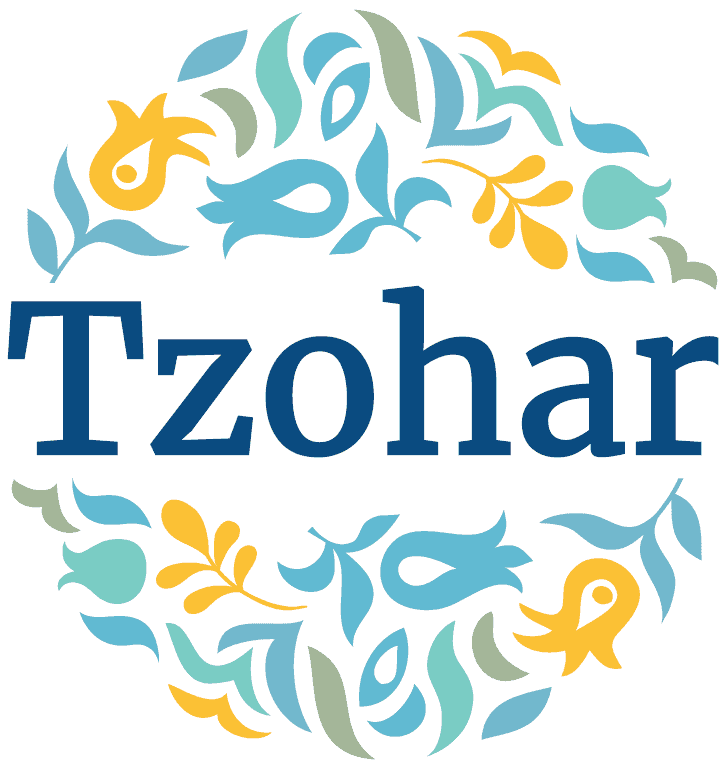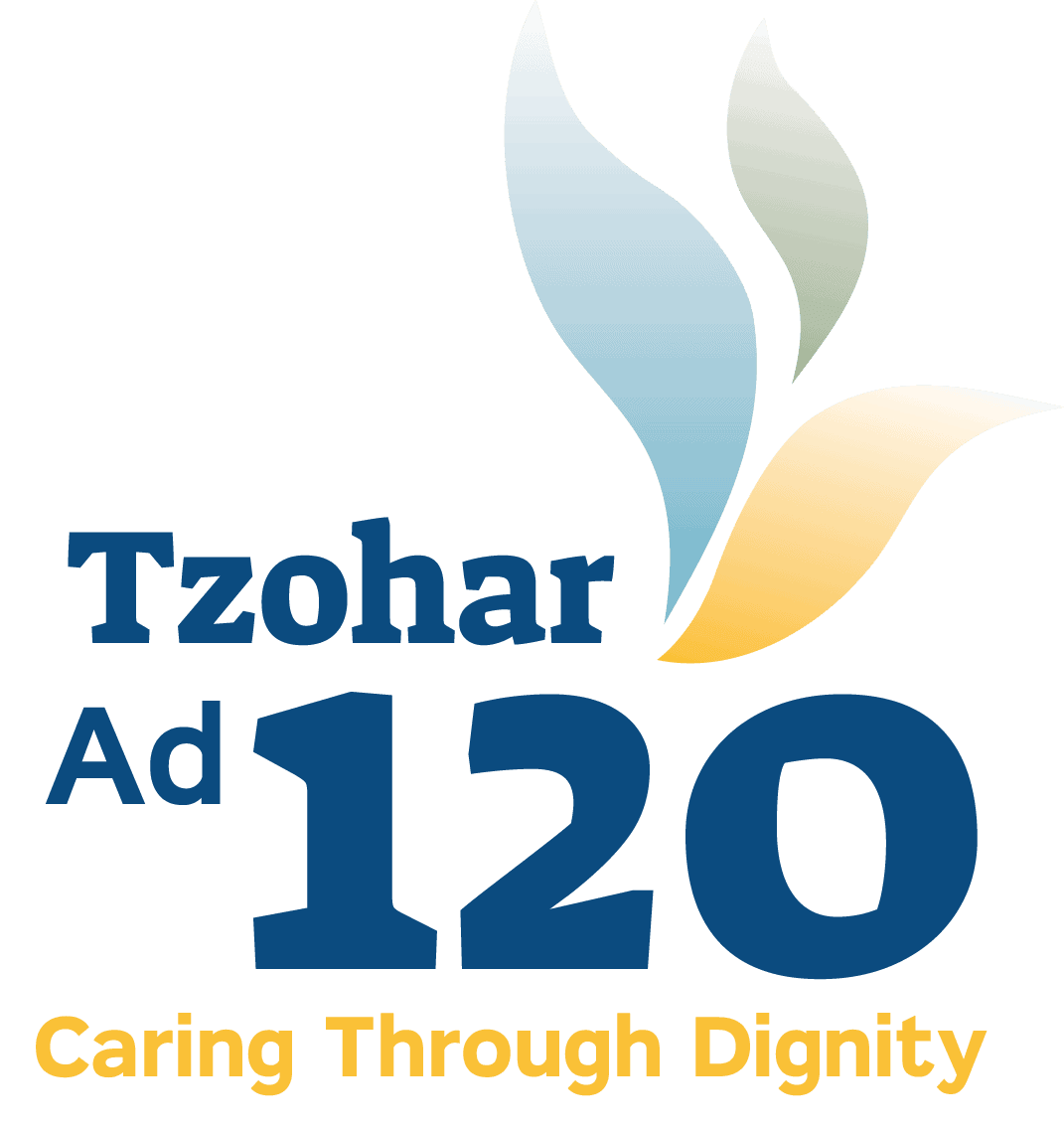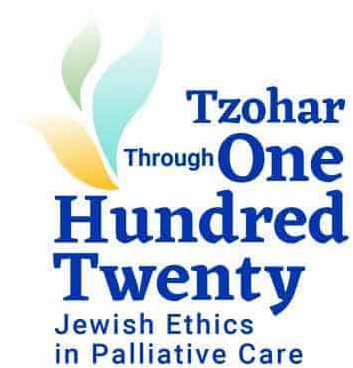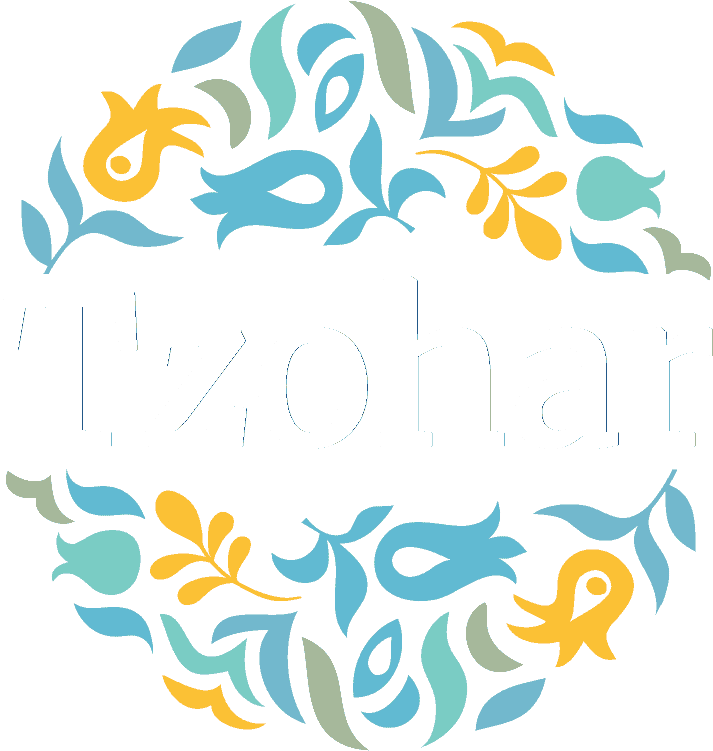1. Introduction
Oftentimes, illness and suffering are fundamentally intertwined. But if we are able to isolate these two components, even on just a theoretical level, the question arises: what is the place of suffering in medical and halachic considerations? We will examine two sides of this problem. First, we will examine whether there is a situation where one can agree with the claim of a patient (both in cases where it is said explicitly and when it is implicit) that “better my death than my life”. Is one allowed to withhold life-saving treatment when its success means additional suffering or when the procedure itself will cause suffering to the patient? Secondly, we will try to estimate the strength of being in a state of suffering on halachic consideration regarding violating prohibitions: may one violate the Sabbath or transgress a different biblical prohibition when a patient is in a non-pikuach nefesh state of suffering?
The issues dealt with in this position paper are very serious. Any small change in case details can change the conclusion, and therefore one should not decide the halacha directly from this paper. For practical advice, reach out to Tzohar’s call center at *9253.
2. The Ethical Dilemma
When we analyze the question of ceasing (or at the very least withholding) treatment due to suffering, we are placed at a crossroads between values: the value and sanctity of human life and the value of autonomy over one’s body and one’s quality of life.
The inherent value of life and its sanctity demands placing priority on conserving it against any dangers that befall it. However, in certain cases, quality of life may trump the inherent value of life. Granted that quality of life is subjective, and therefore will not usually function as the main determinant or deciding factor in withholding treatment. The more significant value conflicting with life’s inherent value is autonomy. In the past, the medical community had adopted a paternalistic approach, according to which the doctor was considered to know what is best for the patient and therefore would determine how to treat him. However, in the last couple of decades the autonomy approach has assumed the mantle the paternalistic approach once held. According to the autonomy approach, man is responsible for his own body and should be able to make decision regarding it independently. From the principle of autonomy, it is understood that a patient of sound mind should be the ultimate decider regarding his or her treatment options. Despite this, when decided between these perspectives one should differentiate between direct treatment of the disease, which allows for greater patient consideration and questions regarding prognosis, and supportive / palliative care such as patient nutrition, where the patient’s wishes have less weight. 1.
3. The Jewish Position: Principles
3.1 The Sanctity of Life and the Obligation to Preserve a Life
Sanctity of life is a tremendous value, and Chazal expounded, “’And you should live by them’ – and not die by them” (Sanhedrin 74a). From here the Gemara learns that the majority of mitzvot are pushed aside for pikuach nefesh, barring the three major sins. One can learn from this that the value of life is a lofty one, but it does not trump all. Life’s inherent value mandates maintaining a healthy lifestyle, and therefore one who is sick is commanded to seek out treatment, and medical professionals are commanded to heal him2. Included within this prohibition is a ban on suicide3. Despite this, halacha recognizes that there are certain cases where the obligation to preserve a life is pushed aside due to tremendous suffering. The basis of this ruling is found as early as the Rishonim. For example, when the Rishonim were asked to explain the death of King Shaul, they conclude that the prohibition of suicide was waived due to the suffering Shaul would have endured in the hands of his enemies4. The greatest poskim of our generation have also engaged in this question from a medical perspective, as we will discuss extensively later on5.
3.2 Man’s Ownership Over His Body
The debate over whether a patient can make decisions regarding his body which may shorten his life touches on a question that divided the Achronim: does man have ownership over his own body? It is worthwhile to note that even according to those who hold that man does have ownership over his body, this refers to partial ownership with God and does not grant the right to cause himself bodily harm6. From a halachic perspective, the question of man’s ownership over his body has ramifications on the extent of one’s responsibilities to it: when is he misusing his body and in what situations can the owner (God) demand its return without man being responsible to fight for his life?
4. The Jewish Position: Main Sources
4.1 The Death of Rabbi Chanina Ben Tradyon
The main source for suffering in cases with no chance of recovery is the account of the death of Rabbi Chanina Ben Tradyon, who was sentenced to execution by fire (Avodah Zara 18a). On the one hand, Rabbi Chanina refuses to open his mouth in order to expedite his death; on the other hand, he consents to the offer of the executioner to stoke the fire and remove the sponge covering his heart, bringing his death closer. One can deduce from here that at a certain stage it is permitted even to actively remove something preventing the death of a person7.
4.2 The Issue of Pain Severity
In Mesechet Ketubot (33a-b) the Gemara utilizes the inference that being in a state of suffering can be even worse than death, and brings Chananya, Mishael, and Azaryah as an example. Granted they were willing to sacrifice their lives in order not to worship an idol, but according to Rav (ibid.), if they had been beaten, they would have conceded and bowed to the idol. One can learn from here that under certain conditions, treatment for pain management is more important than prolonging life8.
4.3 Patients in Critical Condition (“Sakanah”)
Are suffering or pain by themselves considered enough to qualify a patient as having a “critical condition”, allowing us to violate the Sabbath and push aside other prohibitions? It arises from the Gemara in Mesechet Avodah Zara (28a) discussing the definition of a “patient with a critical condition” and violating the Sabbath, that pain itself is indeed considered under this category. Therefore, in the case discussed there, we do violate the Sabbath for severe pain, even if the patient is not necessarily in critical condition. However, the poskim split regarding how the ruling from this discussion applies practically9.
Another issue arising from this debate is regarding the ability to differentiate between suffering and pain versus the sickness itself and its severity. On a theoretical level, it is possible to relate to pain independent of the condition in two circumstances: 1) suffering in cases where it is clear that the situation is not life-threatening, and 2) suffering in cases where it is clear that one cannot save the life of the patient. Unfortunately, it is almost impossible to differentiate between suffering and the patient’s physical condition in practice. Great suffering generally points to an underlying danger, or at the very least a doubt as to the severity of the condition. Furthermore, even when there is no chance for recovery, pain management allows for at least a short extension of the patient’s life10.
5. Conclusions
5.1 Withholding Life-Prolonging Treatment due to Suffering
5.1.1 It is prohibited to perform an active procedure shortening the life of a patient, even if he is in a state of great suffering11.
5.1.2 Regarding a terminally ill patient that is in severe pain and asks that their life not be extended – it is permitted to refuse life-prolonging treatments (such as CPR, mechanical ventilation, invasive surgery, dialysis, chemotherapy, and radiation)12.
5.1.3 As a general principle, it is prohibited to withdraw medical treatment, but in certain cases it is permitted to withhold medical treatment – and in extreme cases even ideal.
5.1.4 One should not withhold administration of nutrition and hydration, but under certain conditions one may exchange a painful form of nutrition delivery with an alternative method, even if it is less effective. One may even rely on IV administration of saline and glucose alone13.
5.1.5 One should not withhold oxygen administration from a terminally ill patient14.
5.1.6 One may withhold connecting a terminally ill patient to a ventilator, but it is prohibited to disconnect someone from the machine15.
5.1.7 It is proper to connect a terminally ill patient to a ventilator that operates at fixed intervals in order to allow for decision making regarding whether to withhold renewal of the artificial respiration, however the technological abilities to do this are complicated16.
5.1.8 In a case where all methods of saving the patient have been exhausted and the evaluation is that the patient will suffer, one may lower the ventilation and oxygen rate17.
5.2 Pain Management on the Sabbath or in Other Prohibitive States
5.2.1 It is permitted to violate the Sabbath for patients in a critical condition (“Sakanah”) for any of the patient’s needs, even if the need is not treating the condition itself18, and therefore there is no doubt that one can violate the Sabbath to mitigate pain. Furthermore, it is difficult to separate the condition from the suffering and pain, and therefore one cannot definitively state what situation would be considered ‘suffering without a critical condition’.
5.2.2. Even when it is clear that a patient’s life will not be saved, one can violate the Sabbath in order to perform pain management. In a similar fashion, one can override other prohibitions19.
5.2.3 When it is clear that there is no risk from the sickness yet there is pain in internal organs, one may rely on the lenient opinions that define pain itself as a critical condition.
הערת שוליים
- See: The Medical Halachic Encyclopedia, volume 5, entry ‘Terminally Ill (1)’. Pages 171-176; volume 2, entry ‘Informed Consent’, pages 633-717; position paper of the Israeli Medical Association, ‘Medical Ethics, the Treatment of Patients with Terminal Illness, and Ineffective Treatment Methods’, October 2019 (https://bit.ly/3gigj8k); Avinoam Reches (editor), Medical Ethics: Principles and Position Papers, pages 121-122; Daniel Sinclair, ‘Patient Autonomy, Judaism, and Democracy in the Patient Nearing Death Act’, 5766-2005, HaMishpat, 21(5776), pages 224-229 (on these pages the author summarizes the discussion of patient autonomy in Anglo-American law; further on in the paper he considers the status of autonomy within halacha); Ram Yishai, ‘Nutrition in Terminal Patients and the Right to Die’, HaRefuah, 141.2 (5762); David Stein, ‘The Terminally Ill and Sanctity of Life’, HaShiloach, 20 (5780), pages 65-85. There is a dedicated section of edition 51 (July 2019) of the journal Refuah VeMishpat entitled ‘Treatment of the Terminally Ill – Corrective Agreement in the Clinical and Legal Field in Light of the Patient Nearing Death Act’, containing 9 essays. The essays are found at the website “Inbal – the Medical Risk Management Unit” (https://bit.ly/39PbYrM). These dilemmas have been faced by Israeli legislature and rulings have been determined in the ‘Patient Nearing Death Act’. The law differentiates between ‘a patient nearing death’ and ‘a patient in terminal stages’: the former suffers from a terminal illness with a life expectancy no longer than 6 months (even with treatment). The latter is in a state where a number of essential body systems have failed and his life expectancy is no longer than two weeks. According to this law, a patient nearing death who is mentally competent and does not want his life extended should have his request granted and treatment should be withheld. However, one is required to encourage oxygen administration, food, and liquids even via artificial methods. When the patient is not mentally competent and it is determined he does not want his life extended, one should withhold treating the illness, but not supportive treatments such as food and liquid administration. When the patient is in terminal stages, one should withhold even supportive treatment excluding IV administration. See articles 8, 15-17 of the Patient Nearing Death Act, 5766 – 2005. Some of the essays at the beginning of this endnote discuss this law, its benefits and its drawbacks, and its practical implementation in the medical system.
- Shulchan Aruch, Yoreh Deah, 336:1. See position paper ‘The Obligation to Be Healed’. Granted there are some Achronim that have, under certain conditions, relied on the statements of the Ramban in his commentary on the Torah regarding avoiding medical care, but the generally accepted halachic ruling is according to the statements of the Ramban in the Torat Adam (Sha’ar HaMeichush, the Matter of Sakanah [Rabbi Chavel Edition, page 41-43]) who writes that it is a mitzvah to be healed. See the Tzitz Eliezer Responsa, volume 17, article 2; ibid., volume 5, Ramat Rachel, article 20; Yabia Omer Responsa, Choshen Mishpat, volume 4, article 6; Yechave Daat Responsa, volume 1, article 61; position paper ‘The Obligation to Be Healed’, endnote 12.
- Mishneh Torah, Hilchot Rotze’ach VeShmirat HaNefesh, chapter 2, halacha 2. Regarding the question of whether the prohibition of suicide applies in cases of tremendous suffering, see: Yabia Omer Responsa, Yoreh Deah, volume 2, article 24; Tzitz Eliezer Responsa, volume 5, Ramat Rachel, article 25; Rabbi Amit Kola, ‘Proposed Legislation “Physician-Assisted Euthanasia” From a Halachic Perspective’, Tchumin, 37 (5777), pages 113-126; The Medical Halachic Encyclopedia, volume 2, entry ‘One Who Commits Suicide’, pages 47-49.
- Two components are discussed surrounding the death of Shaul: (1) the act of suicide itself (Shmuel 1 31:3-5); (2) the story of the Amalekite youth who claimed to bring King Shaul’s death to fruition (Shmuel 2 1:6-15). The main Talmudic source used for the halachic discussion of death-quickening procedures in places of suffering with poor prognosis is the death story of Rabbi Chanina ben Tradyon, see later on. Additional discussions: 1) Ulla’s opinion regarding the account of the two residents of Hozai (Nedarim 22a), who told the murderer to further incise the neck and bring the victim’s death quicker; 2) The account of Rebbe’s death (Ketubot 104a) and the question of whether there is a stage where one can pray for the death of an ill person; 3) The account of the city of Luz, of which the Angel of Death did not enter but the elders of the city would leave the city when they were ready to die (Sotah 46b); 4) The ruling regarding one trapped under debris on Shabbat (Yoma 85a), where we violate Shabbat even for a person found to be crushed and mortally wounded; 5) The account of the elder woman who was repulsed with her quality of life and was advised by Rebbe Yose to abstain from going to synagogue (Yalkut Shimoni, Parshat Eikev, section 871).
- See Igrot Moshe, Choshen Mishpat, volume 2, article 74:2: “In cases where there is suffering and no medicine can alleviate it, [in these cases] it is better for one to die than live such suffering”. His opinion is that in cases where there is no option for healing a person and continued treatment is fraught with suffering, there is no obligation to heal the patient; even in cases where we do not know the patient’s opinion, the assumption is that death is preferred over life. Compare this to the Tzitz Eliezer, volume 18, article 62, that even in cases of suffering there is no heter for withholding treatment: “That even a life of suffering and severe illness, it should never befall us, that are unavoidable, even [in these cases] they are preferred over death”. For an extensive discussion, see the sources brought in endnote 12 and onwards.
- According to Rabbi Shlomo Yosef Zevin (In Light of Halacha, pages 318 onwards; ibid., Halacha and Medicine, 2 [1981], pages 93 onwards), man does not have ownership over his body. Rabbi Shaul Yisraeli (The Torah and the State, 5-6 [5713-5714], page 106; ibid., Amud HaYemini, article 16:16 onwards) disagrees and believes that there is dual ownership with God. See The Medical Halachic Encyclopedia, volume 2, entry ‘Informed Consent’, pages 673-674. Even if man does not have ownership over his body, it seems that he is permitted to make decisions relating to his body and his life, provided that these decisions follow Torah law. See Rabbi Yuval Cherlow, ‘Withholding Treatment in Terminally Ill Infants Infected with Invasive Bacteria’ Assia, 85-86 (5769), page 58.
- The halacha of ‘removal of a preventative object’ is explained by the Rama, Yoreh Deah, article 339:1, the poskim discuss the question of whether Rabbi Chanina Ben Tradyon’s consent to removing the sponges was due to ‘removal of a preventative object’, whether the action is generally prohibited and was allowed as a hora’at sha’ah (temporary permit), or because the performer of the action was not Jewish. See: Yabia Omer Responsa, Yoreh Deah, volume 2, article 24; Igrot Moshe Responsa, Yoreh Deah, volume 2, article 174; ibid., Choshen Mishpat, volume 2, articles 73-74; Nishmat Avraham, Yoreh Deah, article 339:8; The Medical Halachic Encyclopedia, volume 5, entry ‘Terminally Ill [1]’, pages 124-131; Yisrael Katz, ‘The Law of “Removing a Preventative Object” – The Laws of Dying, from Original Sources to Modern Day’, Assia Books, 16 (5779), pages 258-267. Rabbi Zalman Nechemiah Goldberg (The Terminally Ill – Summary of Responsa’, Assia, 63-64 [5759], pages 6-8) notes that there are three approaches to explaining the contradiction between the obligation to prolong life and the heter for removing a preventative object: one places the emphasis of the issue of prognosis; the second differentiates between natural life-saving procedures and the removal of external factors; the third differentiates between routine and non-routine procedures. He halachically rules that one may withhold treatment if all three conditions have been fulfilled. In cases where the third condition alone has been fulfilled, there is also room to permit withholding treatment, due to it being the most crucial factor. See the sources for his opinion in the Nishmat Avraham, Yoreh Deah, article 339:4; and The Medical Halachic Encyclopedia, volume 5, entry ‘Terminally Ill (1)’, pages 401-415.
- See Tzitz Eliezer Responsa, volume 13, article 87. Rabbi Waldenberg learns from here that one can administer morphine injections to a patient in order to manage pain, even if there is a worry that the treatment will shorten his life. We discuss this in detail in the position paper ‘Using Painkillers That May Shorten the Life of a Patient’.
- The Shulchan Aruch rules (Orach Chayim, 328:3): “and [this ruling applies] specifically in a case where one internal organ is damaged due to an injury, a cyst or the like, but pain by itself is not considered a wound”. From his words it seems like suffering by itself is not considered a life-threatening condition which would warrant violating the Sabbath. According to the Biur Halacha (ibid., “ודווקא”), only regarding teeth is pain considered critical, but not other internal organs. This is corroborated by the Aruch Hashulchan (Orach Chayim, article 328:21). Despite this, some Achronim do hold that pain in internal organs is considered a life-threatening condition, see: Shvut Yaakov Responsa, volume 2, article 70; Imrei Yosher Responsa, volume 2, article 43:4; Shevet Halevi Responsa, volume 6, article 30:2. See also: Nishmat Avraham, Orach Chayim, article 328:17; The Medical Halachic Encyclopedia, volume 7, entry ‘Sabbath’, page 449.
- See Shmirat Shabbat Ke’Hilcheta (Third Edition, Jerusalem 5770), chapter 32, footnote 157 (and the 5739 addition, footnote 150). Rav Neuwirth brings the opinion of Rabbi Shlomo Zalman Auerbach that one should not violate the Sabbath to inject morphine when it is clear that it will have no healing effect aside from the sedation. Yet in the Nishmat Avraham, Orach Chayim, article 328:17, Rabbi Shlomo Zalman Auerbach is quoted saying that regarding a life-threatening condition, anything that may calm the patient and ease his pain has potentially life-saving abilities in the interim and therefore one is obligated to treat pain in all conditions. Rav Feinstein writes as well (Igrot Moshe Responsa, Choshen Mishpat, volume 2, article 73:9) that it seems that every treatment for pain extends a patient’s life temporarily, even when this is not obvious to the physician.
- The lenient approach to suicide in a place of suffering exists primarily when relating to a suicide victim after the fact and not when discussing a practical heter, we will not go into depth here. See the sources brought earlier in endnote 3.
- Minchat Shlomo Responsa, volume 1, article 91:24; The opinion of Rabbi Yosef Shalom Elyashiv is brought in the Nishmat Avraham, Yoreh Deah, Article 339:4 (see there as well the opinions of the other poskim mentioned in this article); Igrot Moshe Responsa, Choshen Mishpat, volume 2, article 73-75. Furthermore, according to Rav Feinstein (ibid., Yoreh Deah, volume 2, article 174:3), not only is there no obligation to extend the suffering of a terminally ill patient, but it is a mitzvah not to intervene in extending their suffering. This is also the opinion of Rav Hadaya (Yaskil Avdi Responsa, volume 7, Yoreh Deah, article 40). See as well the ruling of Rabbis Elyashiv, Auerbach, Wosner, and Karelitz, Yated Ne’eman, 20th of Kislev 5755 (23/11/94), page 1 (see The Medical Halachic Encyclopedia, volume 5, entry ‘Terminally Ill[1]’, pages 153-155). Compare to the Tzitz Eliezer Responsa, volume 5, section Ramat Rachel, articles 28-29; ibid., volume 9, article 47; ibid, volume 10, article 25, chapter 6; ibid., volume 13, article 87; ibid., volume 14, articles 80-82; volume 18, article 62. According to Rav Waldenberg, one should treat the patient using all possible methods as long as they are alive, even if they do not consent. See: The Medical Halachic Encyclopedia, ibid. pages 133-135, 141-143; Rabbi Moshe Weinberger, ‘Severe Distress as a Factor in Medical Decision-Making’, Emek Halacha, volume 1, Jerusalem 5746, pages 53-63. Regarding drug administration, see position paper ‘Drug Administration to Terminally Ill Patients’.
- See position paper ‘Artificial Nutrition in Terminally Ill Patients’.
- The lenient approach to suicide in a place of suffering exists primarily when relating to a suicide victim after the fact and not when discussing a practical heter, we will not go into depth here. See the sources brought earlier in endnote 3.
- Igrot Moshe Responsa, Yoreh Deah, volume 3, article 132; Tzitz Eliezer Responsa, volume 17, article 72:13; The Medical Halachic Encyclopedia, volume 5, entry ‘Terminally Ill[1]’, page 148 and footnote 257. There are those who permit even disconnecting a mechanical ventilator, see Rabbi Chaim David Halevi, ‘Disconnecting a Patient with No Chance for Survival from an Artificial Ventilator’ T’chumin, 2 (5741), pages 297-304; and see The Medical Halachic Encyclopedia, ibid. For extensive discussion regarding the different aspects of ventilation, see the position paper ‘Artificial Respiration in Terminally Ill Patients’.
- Tzitz Eliezer Responsa, volume 13, article 89; see The Medical Halachic Encyclopedia, volume 5, entry ‘Terminally Ill[1]’, page 149-150 and footnote 260.
- See Rabbi Avraham Steinberg, ‘Halachic Protocols for Physician Behavior in the ICU – According to the Opinions of Rabbi Shlomo Zalman Auerbach and Rabbi Shmuel Halevi Wosner’, Assia, 63-64 (5759), pages 18-19.
- Shulchan Aruch, Orach Chayim, 328:4; Mishnah Berurah, ibid., subarticle 14; Shulchan Aruch, Orach Chayim, 330:1.
- See Igrot Moshe Responsa, Choshen Mishpat, volume 2, article 73:9. Rav Feinstein allows the overriding of the transgression of castration in order to lessen the pain of a cancer patient with no viable treatment; see Nishmat Avraham as well, Orach Chayim, article 328:17.





